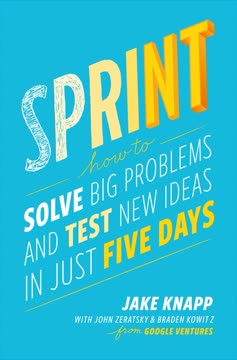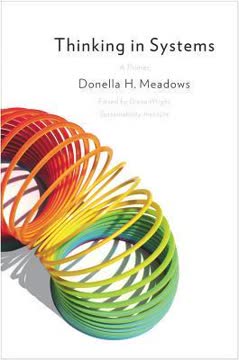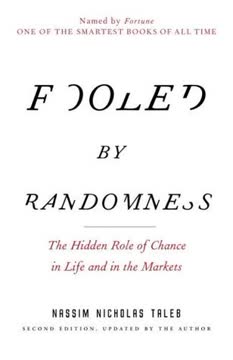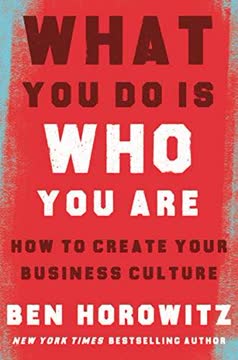Key Takeaways
1. Embrace a full life, not an easy one
"If you want an easy life just grab a hammer, a big one, and hit yourself on the head, hard. You'll have a very easy life. They'll even bring the food to your bed."
Choose meaningful challenges. A full life is one filled with significant achievements and personal growth. It requires constant effort to understand and improve various aspects of life, including family, friendships, and work. This choice demands resilience in the face of setbacks and the willingness to learn from failures.
Develop stamina for success. Achieving meaningful goals often involves failures along the way. By viewing these setbacks as learning opportunities, like a scientist sees a failed experiment, you can maintain the motivation to keep trying. This perspective helps build the mental stamina necessary to persevere through challenges and ultimately reach your goals.
2. Thinking clearly is key to recognizing and seizing opportunities
"Good luck is preparation meets opportunity."
Preparation enables opportunity recognition. Clear thinking allows you to understand the cause-and-effect relationships governing various situations. This deep understanding serves as preparation, enabling you to recognize opportunities that others might miss. By developing this skill, you increase your chances of encountering and capitalizing on promising situations.
Create your own luck. Rather than relying on chance, actively work to improve your ability to think clearly. This involves:
- Analyzing situations to understand underlying causes
- Identifying potential opportunities in various scenarios
- Developing plans to capitalize on those opportunities
- Continuously refining your understanding and approach
By consistently practicing clear thinking, you position yourself to create and seize opportunities, rather than waiting for luck to strike.
3. Reality is inherently simple, not complex
"The key for thinking like a true scientist is the acceptance that any real life situation, no matter how complex it initially looks, once understood, is actually embarrassingly simple."
Simplicity underlies complexity. While reality may appear complex on the surface, it is governed by a relatively small number of fundamental principles or causes. By focusing on identifying these core elements, you can develop a clearer understanding of seemingly complex situations.
Seek root causes. To uncover the inherent simplicity in complex situations:
- Look beyond surface-level details
- Ask "why" repeatedly to drill down to fundamental causes
- Identify common factors that influence multiple aspects of the situation
- Create logical maps to visualize relationships between elements
- Challenge assumptions that may be obscuring the underlying simplicity
By adopting this mindset, you can more effectively analyze and address complex problems in both personal and professional contexts.
4. Conflicts can be eliminated by challenging assumptions
"When we face a conflict, especially when we cannot easily find an acceptable compromise, let's do exactly the same thing we do when we encounter a contradiction; let's insist that one of the underlying assumptions is faulty."
Reframe conflicts as solvable puzzles. Instead of viewing conflicts as inherent and unsolvable, approach them as challenges to be overcome by identifying and challenging underlying assumptions. This shift in perspective opens up new possibilities for resolution.
Systematic conflict resolution:
- Clearly define the conflict
- Identify the underlying assumptions on both sides
- Question each assumption, looking for those that may be false or unnecessary
- Explore alternative viewpoints or approaches that challenge these assumptions
- Develop solutions that address the core issues without relying on faulty assumptions
By applying this method, seemingly intractable conflicts can often be resolved in ways that benefit all parties involved.
5. Seek win-win solutions in all relationships
"Harmony: 'the quality of forming a pleasing and consistent whole.'"
Believe in the possibility of harmony. Approach every relationship with the conviction that a mutually beneficial solution exists, even if it's not immediately apparent. This mindset opens up creative possibilities and encourages persistence in finding solutions.
Steps to find win-win solutions:
- Identify each party's core needs and interests
- Look for larger, shared goals that encompass individual interests
- Brainstorm solutions that address these shared goals
- Focus on expanding resources or creating new value, rather than dividing existing resources
- Be willing to challenge traditional approaches or assumptions
- Communicate openly and collaboratively throughout the process
By consistently seeking win-win outcomes, you can build stronger, more harmonious relationships in both personal and professional contexts.
6. Never say "I know" - always question and improve
"The real question is: What can be done to stimulate the required change?"
Embrace continuous improvement. Avoid the trap of thinking you fully understand a situation, even when you've achieved success. Always look for ways to question your assumptions and improve your understanding and results.
Strategies for ongoing growth:
- Analyze unexpected results, both positive and negative
- Challenge assumptions, especially long-held ones
- Explore ramifications of changes and new information
- Look for opportunities in new situations or contexts
- Encourage diverse perspectives and ideas
- Set increasingly ambitious goals to push boundaries
By maintaining a learning mindset, you can continue to grow and achieve beyond your initial expectations.
7. Emotion, intuition, and logic form the basis of clear thinking
"We as human beings are standing on a three-legged stool—emotion, intuition and logic."
Integrate all aspects of thinking. Clear thinking isn't just about cold logic; it requires a balance of emotion, intuition, and logical reasoning. Emotions provide motivation and highlight areas of importance, intuition offers rapid insights and connections, while logic helps verify and refine these insights.
Developing clear thinking:
- Acknowledge and understand your emotional responses
- Trust and cultivate your intuition in areas of expertise
- Use logic to validate and expand on intuitive insights
- Practice integrating all three elements in decision-making
- Recognize that strengthening one aspect often reinforces the others
By harmonizing these three elements, you can develop more comprehensive and effective thinking processes.
8. People are fundamentally good - avoid blame and seek understanding
"Never think that we are not influenced by it; we are an integral part of that culture."
Challenge negative assumptions about people. Our culture often encourages us to assume the worst about others, especially in conflicts. By consciously rejecting this tendency and seeking to understand others' perspectives, we can find more effective solutions and build better relationships.
Strategies for avoiding blame:
- Recognize your own biases and cultural influences
- Look for systemic or situational causes rather than personal faults
- Seek to understand others' motivations and constraints
- Focus on finding solutions rather than assigning blame
- Practice empathy and perspective-taking
By adopting a more positive view of human nature, you can approach conflicts and challenges more constructively and collaboratively.
9. Practice thinking clearly to develop intuition and achieve success
"The more you practice, the easier it becomes. When you practice it to the extent that it becomes second nature to you, people might start calling you a genius."
Cultivate clear thinking as a habit. Consistently applying the principles of clear thinking in various situations helps develop stronger intuition and problem-solving skills. Over time, this practice can lead to seemingly effortless insights and solutions.
Steps to develop clear thinking:
- Regularly question assumptions and beliefs
- Analyze cause-and-effect relationships in various situations
- Look for underlying simplicity in complex problems
- Practice finding win-win solutions in conflicts
- Continuously seek to improve and refine your understanding
- Apply clear thinking principles in both personal and professional contexts
By making clear thinking a habit, you can enhance your ability to recognize opportunities, solve problems, and achieve success across all areas of life.
Last updated:
FAQ
What's "The Choice" by Eliyahu M. Goldratt about?
- Exploration of Clear Thinking: "The Choice" is about applying clear thinking to both personal and professional life to achieve a full life. Goldratt emphasizes the importance of understanding cause-and-effect relationships.
- Inherent Simplicity: The book introduces the concept of Inherent Simplicity, suggesting that reality is not as complex as it seems and can be understood through simple, logical analysis.
- Practical Philosophy: It combines business strategies with a life philosophy, encouraging readers to apply scientific thinking to everyday problems.
- Dialogue Format: The book is structured as a dialogue between Goldratt and his daughter, Efrat, making complex ideas more accessible and relatable.
Why should I read "The Choice" by Eliyahu M. Goldratt?
- Improved Problem-Solving: The book offers tools and perspectives to enhance problem-solving skills by understanding the root causes of issues.
- Personal and Professional Growth: It provides insights into achieving a full life by balancing personal aspirations with professional responsibilities.
- Unique Approach: Goldratt's method of applying scientific thinking to social sciences offers a fresh perspective on handling conflicts and making decisions.
- Engaging Format: The dialogue between Goldratt and his daughter makes the book engaging and easy to follow, even when discussing complex concepts.
What are the key takeaways of "The Choice" by Eliyahu M. Goldratt?
- Inherent Simplicity: Reality is simpler than it appears, and understanding it requires identifying the few root causes that govern complex systems.
- Conflict Resolution: Conflicts can be resolved by challenging underlying assumptions, leading to win-win solutions.
- Continuous Improvement: Never settle for diminishing returns; always seek further improvements, even in situations that seem optimal.
- Freedom of Choice: Individuals have the freedom to choose how they perceive and react to reality, which can lead to significant personal and professional growth.
How does Eliyahu M. Goldratt define "Inherent Simplicity"?
- Few Root Causes: Inherent Simplicity suggests that any complex system is governed by a few root causes, making it simpler to understand and manage.
- Convergence of Causes: As one dives deeper into understanding a system, causes converge, revealing the simplicity beneath apparent complexity.
- Application to Reality: This concept applies to all aspects of reality, including human behavior and organizational dynamics.
- Foundation for Clear Thinking: Accepting Inherent Simplicity is crucial for thinking clearly and effectively solving problems.
What is the "Freedom of Choice" concept in "The Choice"?
- Perception of Reality: Freedom of Choice refers to the ability to choose how one perceives and reacts to reality, impacting personal and professional outcomes.
- Learning from Failures: It involves viewing failures as opportunities to learn and improve, rather than as setbacks.
- Proactive Approach: Encourages taking responsibility for one's life and decisions, rather than blaming circumstances or others.
- Empowerment: By exercising this freedom, individuals can create more opportunities and achieve a fuller life.
How does "The Choice" address conflict resolution?
- Challenge Assumptions: Goldratt suggests that conflicts arise from underlying assumptions that can be challenged and changed.
- Win-Win Solutions: By removing false assumptions, conflicts can be resolved in a way that benefits all parties involved.
- Avoiding Compromise: Instead of settling for compromises, the book advocates for finding solutions that eliminate the conflict entirely.
- Practical Examples: The book provides real-world examples of how this approach can be applied in both personal and professional settings.
What are the best quotes from "The Choice" and what do they mean?
- "Reality is built in wonderful simplicity." This quote emphasizes the idea that beneath the complexity of reality lies a simple structure that can be understood through logical analysis.
- "The more complicated the situation seems to be, the simpler the solution must be." Goldratt suggests that complex problems often have simple solutions, which can be found by identifying the root causes.
- "Freedom of choice is the choice to invest in overcoming these obstacles." This highlights the power of personal agency in choosing to address and overcome challenges.
- "Every person is born with tremendous brainpower." Goldratt believes in the potential of every individual to think clearly and achieve a full life.
How does "The Choice" suggest one can improve their thinking skills?
- Practice Clear Thinking: Regularly practice identifying cause-and-effect relationships in everyday situations to improve clarity of thought.
- Avoid Tautologies: Be wary of circular logic and ensure that causes are substantiated by multiple effects.
- Challenge Perceptions: Continuously question and challenge your perceptions of reality to uncover simpler truths.
- Embrace Inherent Simplicity: Accept the concept of Inherent Simplicity to guide your thinking and problem-solving processes.
What role does intuition play in "The Choice"?
- Intuition and Emotion: Intuition is driven by emotion and is essential for generating hypotheses and understanding complex situations.
- Fuel for Logic: Intuition provides the initial connections that logic then builds upon to create a clear understanding of reality.
- Developing Intuition: By practicing clear thinking and engaging deeply with areas of interest, one can strengthen their intuition.
- Three-Legged Stool: Goldratt describes human understanding as a three-legged stool supported by emotion, intuition, and logic.
How does "The Choice" relate to Goldratt's Theory of Constraints?
- Application of TOC: The book applies the principles of the Theory of Constraints (TOC) to personal and professional life, emphasizing the identification and removal of constraints.
- Focus on Root Causes: Like TOC, "The Choice" focuses on identifying and addressing the few root causes that limit performance.
- Systemic Thinking: Encourages viewing problems as part of a larger system, where changes in one area can have significant impacts elsewhere.
- Continuous Improvement: Both TOC and "The Choice" advocate for ongoing improvement and the pursuit of breakthroughs.
What examples does "The Choice" provide to illustrate its concepts?
- BigBrand Case Study: The book uses the example of a large apparel company to demonstrate how identifying root causes can lead to significant improvements.
- Retailer Solution: Goldratt discusses his approach to improving operations in large retail chains, highlighting the simplicity of effective solutions.
- Personal Dialogues: The dialogue between Goldratt and his daughter provides relatable examples of applying these concepts to everyday life.
- Real-World Applications: Various reports and case studies throughout the book illustrate the practical application of Goldratt's ideas.
How can "The Choice" help in achieving a full life?
- Identifying Opportunities: By thinking clearly, individuals can better recognize and create opportunities for personal and professional growth.
- Overcoming Failures: The book provides strategies for learning from failures and using them as stepping stones to success.
- Enhancing Collaboration: Understanding and resolving conflicts can lead to more harmonious relationships and effective collaboration.
- Empowerment and Responsibility: Encourages taking control of one's life by making informed choices and taking responsibility for outcomes.
Review Summary
The Choice receives mostly positive reviews, praised for its insights into Goldratt's thinking processes and Theory of Constraints applications. Readers appreciate the dialogue format between Goldratt and his daughter, which makes complex concepts more accessible. The book explores obstacles to clear thinking and offers strategies for problem-solving in business and life. Some critics find it less engaging than Goldratt's fictional works, while others consider it profound and life-changing. Many recommend reading Goldratt's other books first to fully appreciate The Choice's deeper dive into his philosophy.
Similar Books










Download PDF
Download EPUB
.epub digital book format is ideal for reading ebooks on phones, tablets, and e-readers.









